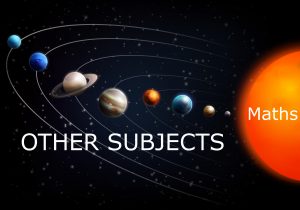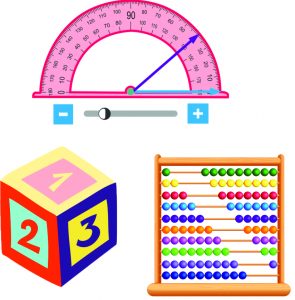Many of our kids’ light-bulb moments occur after school when they discover that mathematics exists in the real world. It includes all of the important aspects of adult life that necessitate basic numerical fluency, such as taxes, personal finance, buying and selling items, and so on.
But what if that light-bulb moment could occur in our classrooms?
Is it possible to teach mathematics in the real world from the start?
It isn’t always easy, but it is possible. Greater involvement and a renewed commitment to learning follow.
Let’s look at some ways for bringing mathematics out of the classroom and into the real world.
Ask your students to find the mathematics in their own lives

Get your students to do some of the work before you decide to cover the entire mathematics curriculum in a single class.
When kids are experiencing difficulty with mathematics or are simply not up to learning on a given day, it’s easy for them to fall into the “We Will Never Use This in the Real World” mindset. They shouldn’t be able to get away so casually.
Have they ever tried looking for mathematics in the real world?
Have you ever challenged children to look for math in the real world?
The likelihood is that the answer to both questions is no.
The discovery of mathematics in the actual world, on the other hand, is far more powerful when it comes from the learners. As a result, don’t feel obligated to justify the existence of mathematics as a subject.
As a weekly assignment, challenge them to look at three things they’ve done at home that include mathematics of any kind and share them with the rest of the class. Students will realize that mathematics’ real-world connections are genuinely unlimited.
Create resources that assist learners in the real world using mathematics.

You may be successful in convincing students that they are already performing mathematics outside of the classroom, but the next step is to show them that there are additional useful methods to use mathematics in everyday life.
A timetable is the most basic example. Between music classes, sports, homework, family commitments, and other activities, children’s in- and out-of-school lives become increasingly complicated. Students will be actively using division for a real-life purpose if they schedule theirs before and after school activities. Naturally, they will learn about time management as a result of this.
As kids get older, the variety of possible applications continues to grow. As more of our students come to us with bank accounts, part-time jobs, and mobile phone subscriptions, a personal budget or basic financial plan, for example, is an important asset.
Set homework that requires you to use real-world math skills.

Homework is an excellent opportunity to teach real-world mathematics. After all, learners use mathematical reasoning outside of school hours and in settings other than the classroom. They’ve finally arrived in the ‘real world.’
Despite this, we frequently assign homework that is essentially a continuation of classroom activities. Finish the worksheet, answer the textbook review questions, go on to the next chapter….
Why not use the home environment to engage children in the mathematical ideas that produce a home run? Here are a few suggestions:
Make a grocery shopping budget for the week. Because most supermarkets have a full online catalog, this is significantly easier because it can be planned out in as much detail as needed. It can’t all be candy or soda, either. A few items on the list set by the parents will compel them to cover mandatory costs.
Bake a cake or cook a meal: This is the ideal opportunity to practice measuring and ratio.
Counting objects around the house is a simple method for younger children to learn about the numerical aspects of the physical environment. You may set increasingly advanced activities for them as they get older, such as a full house remodeling.
Wherever feasible, take advantage of the home atmosphere. The extra benefit is that these activities involve parents and families, making mathematics a collaborative rather than an isolated task in the real world.
Connect maths to other subjects in the classroom.

It’s easy to see why students believe mathematics exists in its own universe. It employs a completely distinct language than other topics and demands the application of unique problem-solving and reasoning techniques.
We may demonstrate to our children that mathematics is not a stand-alone subject by linking it to other disciplines in the curriculum. It’s part of a larger system of knowledge that assists us in comprehending the world.
In subjects like chemistry, astronomy, and physics, science and math are inextricably linked. Students who lack fundamental math skills will have a difficult time reading scientific charts and graphs.
Students can use more advanced arithmetic, such as geometry, algebra Tiles, and calculus to solve chemistry questions, explain planet movements, and analyze scientific findings. When building computer programs and figuring out algorithms, students may be required to solve equations.
Outside of the mathematics department, make use of your colleagues. Yes, cross-curricular collaboration involves time and planning, which are often in limited supply, but the benefits are well worth the effort.
Use real-life examples

During your actual content-centered teaching, it’s worthwhile to take a step away from the textbook and into real life.
Rather than expressing a subject in abstract terms, you can connect it to any of the many real-world situations that are connected to mathematics in some manner. Word problems and research tasks can help students to use an actual, tangible, real-life resource in (or out of) the classroom can be more effective.
Let’s assume you’re teaching patterns. There’s a good chance that there’s a pattern in the constructed environment someplace in the school. It could be a tessellated floor, outside pavement, or even a brick wall. You can utilize this as an actual resource instead of relying on a photocopy. It’s possible to have students:
Continue the pattern on paper or with hands-on materials if possible.
Describe it to a friend who hasn’t seen it before, so they can try to recreate it using their instructions.
Once the students have identified and explained a pattern, you do not need to stop. If they don’t ask you first, the next question you could ask is:
Why would a builder opt for this design?
Then, as a result of this conversation,
Why do you believe it is essential to understand patterns?
One of the in-demand mathematical soft skills is the ability to think freely and with curiosity, which is increasingly expected to develop in pupils. Using this strategy effectively achieves this result. It demonstrates that, in most cases, you don’t need to explain the real-world application of mathematics to children. All you have to do now is lead them there.
How does ORYX Learning connect mathematics to the real world?

Oryx offers a wide range of application problems for various math skills and virtual manipulatives to help students connect their learning to the real world. For example, the money manipulative helps students learn about various denominations in coins and bills prevalent in the present economy. This interactive tool is helpful in teaching counting, using, and exchanging money, thus, clarifying misconceptions and building connections between concepts and the real world.
Students discover how math is relevant and applicable to their daily lives when teachers connect mathematics to their world. These real-world connections are also excellent methods for relating math to other subjects and generating cross-curricular connections, allowing students to grasp the significance of everything they’re learning. It is critical to consider the relevance of the real-world context to the students’ individual and cultural backgrounds in order for the linkages to be genuinely “real-world” for the students for this technique to be most effective.







